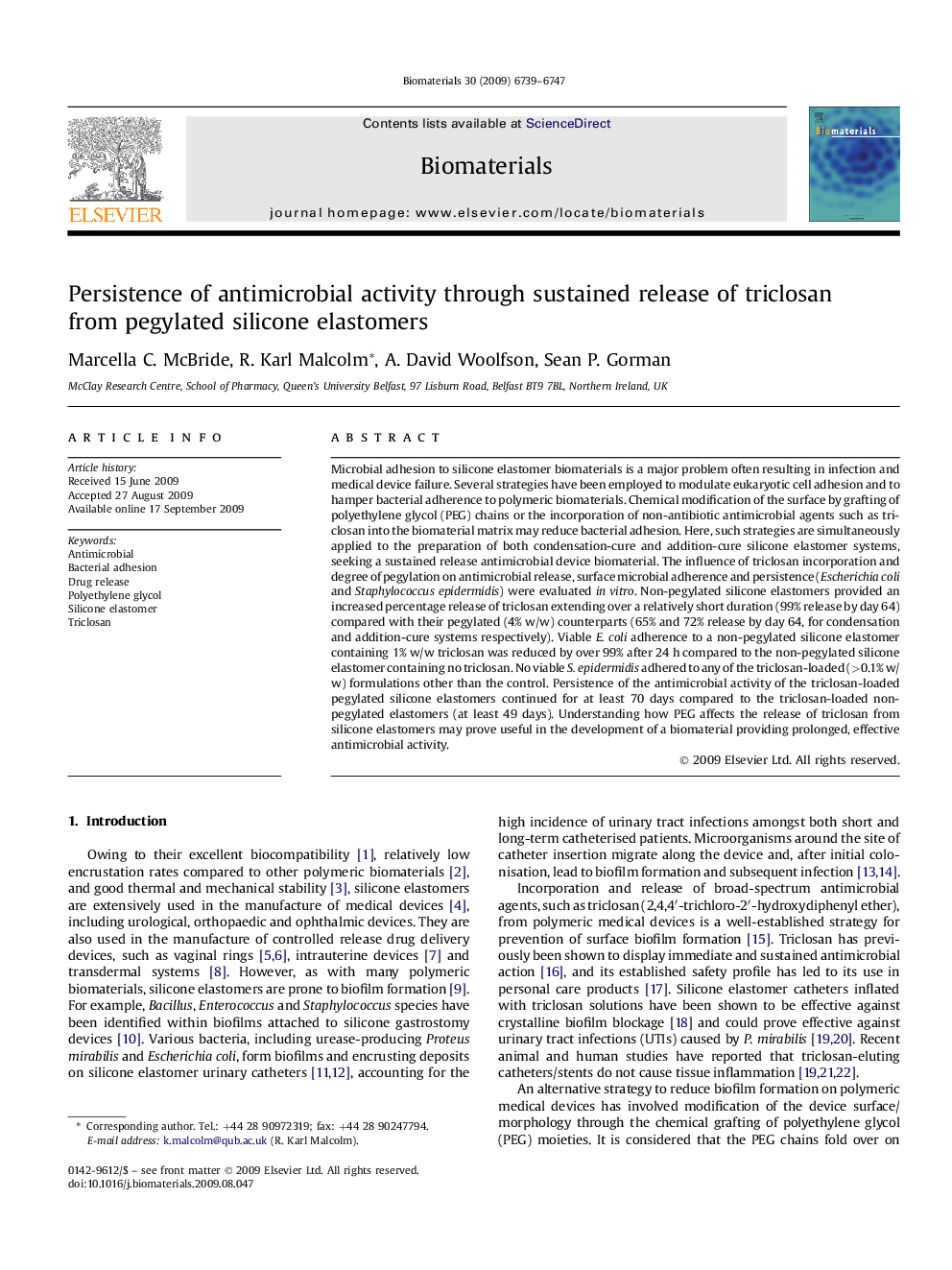| کد مقاله | کد نشریه | سال انتشار | مقاله انگلیسی | نسخه تمام متن |
|---|---|---|---|---|
| 8261 | 583 | 2009 | 9 صفحه PDF | دانلود رایگان |

Microbial adhesion to silicone elastomer biomaterials is a major problem often resulting in infection and medical device failure. Several strategies have been employed to modulate eukaryotic cell adhesion and to hamper bacterial adherence to polymeric biomaterials. Chemical modification of the surface by grafting of polyethylene glycol (PEG) chains or the incorporation of non-antibiotic antimicrobial agents such as triclosan into the biomaterial matrix may reduce bacterial adhesion. Here, such strategies are simultaneously applied to the preparation of both condensation-cure and addition-cure silicone elastomer systems, seeking a sustained release antimicrobial device biomaterial. The influence of triclosan incorporation and degree of pegylation on antimicrobial release, surface microbial adherence and persistence (Escherichia coli and Staphylococcus epidermidis) were evaluated in vitro. Non-pegylated silicone elastomers provided an increased percentage release of triclosan extending over a relatively short duration (99% release by day 64) compared with their pegylated (4% w/w) counterparts (65% and 72% release by day 64, for condensation and addition-cure systems respectively). Viable E. coli adherence to a non-pegylated silicone elastomer containing 1% w/w triclosan was reduced by over 99% after 24 h compared to the non-pegylated silicone elastomer containing no triclosan. No viable S. epidermidis adhered to any of the triclosan-loaded (>0.1% w/w) formulations other than the control. Persistence of the antimicrobial activity of the triclosan-loaded pegylated silicone elastomers continued for at least 70 days compared to the triclosan-loaded non-pegylated elastomers (at least 49 days). Understanding how PEG affects the release of triclosan from silicone elastomers may prove useful in the development of a biomaterial providing prolonged, effective antimicrobial activity.
Journal: Biomaterials - Volume 30, Issue 35, December 2009, Pages 6739–6747